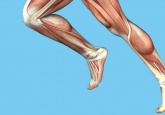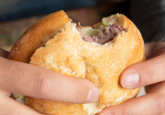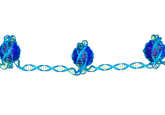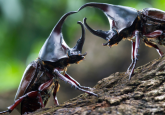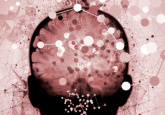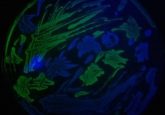The X-Men are among us
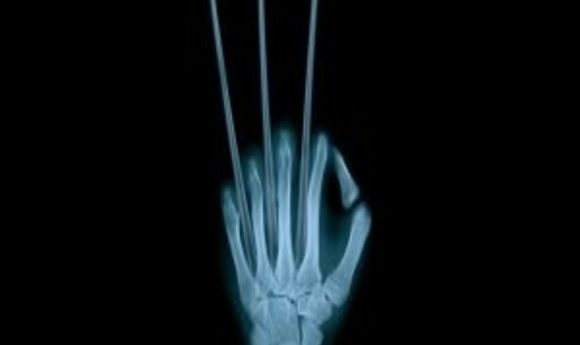
The science behind the X-Men comics and movies may not be entirely correct, but it isn’t entirely wrong either.
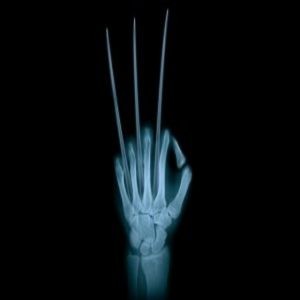
Genetic mutations are essential to human evolution, often playing center stage in some of the most advantageous adaptations throughout history, such as the ability to digest lactose. The comic book industry—and in particular, the X-Men franchise—embraced this idea, creating a world where various mutations in a single gene result in a slew of fantastical new abilities.
“[The X-Men] are attractive to different people because lots of us at different times in our life do feel maybe a little on the outside or a little different. Of course, we all are different. There is no such thing as normal. That’s the main attraction of the X-Men, they’re on the fringes, but yet they are able to do so many good things,” said Paul Zehr, a professor of neuroscience and kinesiology at the University of Victoria in British Columbia and a novelist who uses superheroes to convey science. While many of the X-men’s abilities are outrageous, if not downright impossible, some rare mutations do in fact result in X-men like traits.
X-Men and Humans
Among the X-men, Wolverine is known for his characteristic sturdiness and adamantium claws, but beneath the adamantium, he possesses unbreakable bones, a trait that also exists in human populations. In 1995, a team of doctors worked together to discover how an 18-year old Nebraska woman walked away completely unharmed from a horrific car accident. X-rays revealed that she had extremely dense bones, which prompted researchers to study other members of her family. They found that no one in the family from ages 4-82 had ever broken a bone. There was a similar case in 1994 of an athletic man who also walked away unharmed from a car accident. Eventually, doctors discovered that the unbreakable bones found in these patients were caused by a rare mutation in the Lrp5 gene that controls bone density.
Other X-Men, such as Juggernaut are characterized by their strength and their abnormally muscular build. Similar to Wolverine, Juggernaut has a human disease counterpart known as myostatin-related muscle hypertrophy. It results from a loss of function in the myostatin gene, which controls muscle growth. Without myostatin function, the muscles continue to grow unchecked, resulting in extremely muscular individuals, even without visiting the gym.
The X-Man Quicksilver is known for speed, a trait that in the real world is influenced by the Actn3 gene. There are two variants of the Actn3 gene. One variant produces the ACTN3 protein which is involved with the contraction of fast twitch muscle fibers, the fibers that allow for quick bursts of energy when sprinting. The other variant prevents the formation of the ACTN3 protein. Many Olympic runners have at least one active copy of the Actn3 gene that produces the ACTN3 protein.
Lord of the Flies
“Mutations can occur that make an organism very strange. We know that from our work just in flies. You can get Drosophila with four wings. You can engineer mutations so that eyes appear on legs and on the middle of bodies, by disrupting developmental processes. So, in fact, many of these mutations and variants, even if they have small effects, when they are piled up give rise to the great diversity of life as we see it,” said Trudy MacKay, a geneticist from North Carolina State University. “The downer is that for most of these mutations that have extreme effects, like the four wings or a leg coming out the head of the fly instead of an antenna, [these flies] wouldn’t survive very well in nature.”
The same holds true for some individuals with life-threatening mutations. Nightcrawler and Mystique both have blue skin, a condition that in humans results from a rare recessive disorder known as methemoglobinemia. In these people, approximately 10-20% of their hemoglobin cannot carry oxygen to tissues, giving skin a blue hue. The most widely known case involves a family in the Appalachian Mountains of Kentucky, known as the “Blue People of Troublesome Creek.”
Mystique’s unusual flexibility seems analogous to the flexibility observed in Marfan syndrome, a genetic disease that affects the body’s connective tissues and causes abnormal height, elongated limbs, and flexibility. Abraham Lincoln is the most well-known sufferer of this disease, and more recently, fans learned that the horror movie star Javiet Botet also has this disease.
There is even a genetic condition called hypertrichosis that causes people to grow hair everywhere like the x-man Beast. The exact cause of hypertrichosis is unknown, but the congenital form is most likely caused by a rearrangement of Chromosome 8 that disrupts signaling between the epidermis and the dermis during the formation of hair follicles.
One for All
In the X-Men world, the mutations all stemmed from one gene. According to MacKay, the idea that multiple traits can result from mutations in one gene is not impossible. “There are certainly examples of a gene that, when mutated in different domains, affects different traits. That’s the idea of pleiotropy,” said MacKay.
The Hsp90 gene produces a chaperone protein that helps other proteins to correctly fold. In 1998 Suzanne Rutherford and Susan Lindquist from the Howard Hughes Medical Institute published a study in flies showing that mutations in the fly equivalent of the Hsp90 gene caused incorrect folding and structural changes in other proteins, resulting in a variety of traits (1).
According to Zehr a mutation’s effect calls back to the interaction between nature and nurture. “Genetic predisposition requires environmental pressures to reveal the genes so that they can be expressed in the proteome,” he said.
One of the difficult things about using the X-Men as examples for explaining science is that it gives the impression that all you need is one gene to express a trait. Still, he reasoned that the X-Men offer a unique opportunity to engagingly communicate genetic concepts. “One of the things that I’ve written about in the past is that we really all are mutants. Everybody has a mutation of some kind in their genome,” he said.
So, maybe we’re all X-Men after all, just waiting for the right environmental conditions.
